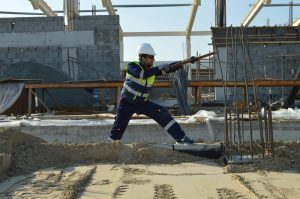Post-Plastic Cities: Building with Algae-Based Materials and Recycled Tech
For years, plastic has been the go-to material for building and construction projects due to its durability and low cost. However, with the increasing environmental concerns and the growing amount of plastic waste in our cities, governments and architects are now turning to more sustainable alternatives for construction materials. One such material that has caught the attention of the building industry is algae-based materials, which are not only eco-friendly but also offer a plethora of benefits. Along with recycled technology, these algae-based materials are paving the way for a new era of construction – post-plastic cities.
The Rise of Algae-Based Materials
Algae, a diverse group of aquatic organisms, has been gaining popularity in the construction industry as a sustainable material for building. But why algae, you may ask? Firstly, it is abundantly available and can be easily cultivated in controlled environments. Secondly, it has a high growth rate and can be harvested in a matter of a few days. Lastly, algae naturally absorbs carbon dioxide from the atmosphere, making it a highly sustainable material.
Benefits of Algae-Based Materials in Construction
One of the main benefits of using algae-based materials in construction is its carbon sequestration capabilities. As the material is composed of algae biomass, it contains a significant amount of carbon, which is locked in during the production process. This helps to reduce the carbon footprint of buildings, making it a much more sustainable option than traditional materials.
In addition, algae-based materials offer excellent thermal and sound insulation properties, making them ideal for use in buildings. They also have a high strength-to-weight ratio and are fire-resistant, making them suitable for various structural and non-structural applications. These materials are also non-toxic and biodegradable, making them safe for the environment and its inhabitants.
Integrating Recycled Technology with Algae-Based Materials
Another promising trend in sustainable construction is the use of recycled technology, which involves incorporating various waste materials into the construction process. This technology, coupled with algae-based materials, is a powerful combination that not only reduces the amount of waste in landfills but also creates new and innovative building materials.
Examples of Algae-Based Building Projects
As the demand for sustainable building materials increases, innovative projects using algae-based materials have been popping up all around the globe. For instance, the BIQ House in Germany, built for the International Building Exhibition, uses a bio-reactor facade made of algae-filled panels to generate heat and biomass. In France, the Montpellier City Hall features an algae-covered biomass facade that provides natural cooling through evaporation, reducing the building’s energy consumption.
In addition to facades, algae-based materials are also being used in the production of various building components such as roofing tiles, insulation boards, and even concrete. With the continuous development and research in this field, we can expect to see more eco-friendly buildings using algae-based materials in the future.
A Bright Future for Post-Plastic Cities
With the negative impact of plastic on the environment, the shift towards post-plastic cities is not only a necessary step but also an exciting one. Algae-based materials, along with recycled technology, are opening up new possibilities for sustainable and innovative construction. These materials not only contribute to reducing our carbon footprint but also promote a circular economy by utilizing waste products. As we continue to build towards a more sustainable future, algae-based materials are undoubtedly set to play a crucial role in shaping our post-plastic cities.











